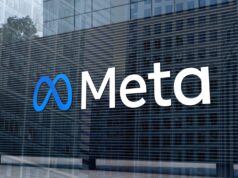
In the rapidly evolving world of artificial intelligence chatbots, security remains a paramount concern for developers and users alike. Recent discussions have highlighted significant security vulnerabilities within Elon Musk’s Grok AI, raising questions about its safeguarding measures compared to its competitors, notably Meta’s Llama.
Grok AI, developed by Musk’s xAI, has been thrust into the spotlight, not just for its innovative approach to conversation and data processing but also for the security challenges it faces. As with any AI chatbot, Grok AI’s capabilities hinge on its ability to process and generate responses based on vast datasets. However, this strength also exposes it to a spectrum of security threats, including prompt injections, data breaches, and phishing attacks.
Prompt injections represent a critical vulnerability, where malicious actors manipulate the chatbot into bypassing its built-in safety protocols. This method has seen chatbots being coerced into endorsing harmful ideologies or participating in illegal activities. OpenAI, the developer behind ChatGPT, has acknowledged these risks, implementing adversarial training to fortify its defenses. Yet, this arms race between security enhancements and the ingenuity of hackers persists, with no definitive solution in sight.
The intersection of AI chatbots with the internet broadens their attack surface considerably. The integration of chatbots like ChatGPT into platforms with internet browsing capabilities introduces the risk of indirect prompt injections. Here, attackers alter web content or employ deceptive emails to manipulate chatbot behavior, potentially leading to personal information breaches or the dissemination of malware. The fundamental challenge lies in the AI’s interaction with external content, which, if manipulated, can lead to unintended and harmful outcomes.
Data poisoning presents another significant threat, where attackers deliberately influence the training data of AI models, aiming to skew their outputs or compromise their integrity. The training process of these large models depends heavily on internet-sourced data, which, if tampered with, can have lasting impacts on the chatbot’s behavior. Despite the awareness of such risks among tech companies, effective countermeasures remain elusive, leaving a persistent vulnerability in AI systems.
In contrast to these vulnerabilities, chatbot security measures have been outlined extensively, providing a framework for mitigating risks. Best practices include data encryption, rigorous access control, and the implementation of secure protocols for data transmission. Regular security audits and adherence to data protection regulations are also critical for maintaining the integrity and trustworthiness of AI systems. Yet, the effectiveness of these measures is continually tested by the evolving tactics of cyber attackers.
As the debate around AI chatbot security intensifies, it is clear that the industry faces a complex challenge. The balance between leveraging the transformative potential of AI chatbots and ensuring their secure, ethical use remains a moving target. For Grok AI, the journey ahead involves not just technological innovation but a steadfast commitment to overcoming the multifaceted security threats that accompany the digital frontier.










